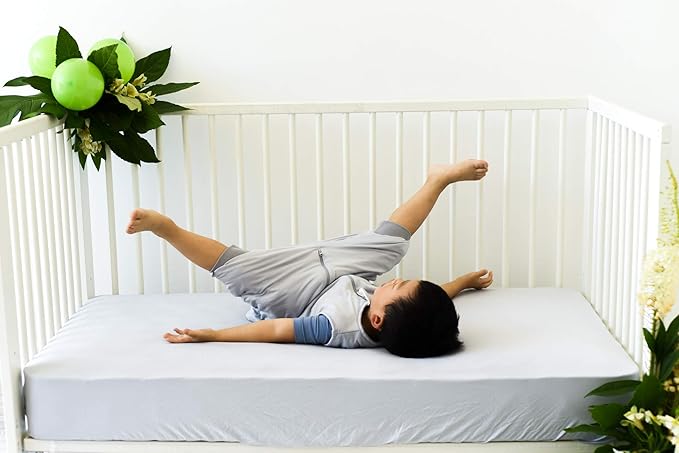
Why Eco-Friendly Cribs Deserve a Second Thought
Before I had kids, I thought “eco-friendly” meant expensive or weird-looking. But then my first baby came along — and I started noticing how many things in her space smelled like chemicals. The paint, the mattress, even the so-called “natural” furniture we’d bought on sale.
That was my wake-up call.
As a sleep consultant and a mom, I know how important a baby’s crib is — it’s where they spend hours every day, especially in the first year. And when you’re putting that much trust into one space, it’s worth asking: what’s it actually made of?
Eco-friendly doesn’t mean perfect. It means doing better where you can. And when it comes to cribs, a few small, thoughtful changes can make a big difference in what your baby breathes, touches, and grows up around.
We’re not aiming for zero impact here — just less harm, more health, and better sleep for everyone.
What to Look for in Crib Materials
This part used to stress me out, honestly. So many labels: green, organic, recycled, sustainable. What helped was learning which ones actually matter — and which ones are just marketing.
Solid wood is usually a safe bet, especially if it’s FSC-certified. That means it comes from responsibly managed forests. Avoid anything labeled “composite” or “engineered” unless it clearly says low-VOC and formaldehyde-free. Because otherwise? You’re likely dealing with glues and treatments you wouldn’t want in your baby’s space.
Some cribs use recycled metal or plastic, which can be great — just make sure it’s BPA-free and meets safety standards for children’s furniture.
Paint and finish also matter more than I first thought. Go for water-based, low-VOC, and specifically marked as baby-safe.
If the company is proud of their materials, they’ll tell you everything. If they’re vague or use fluff words like “eco paint,” I move on.
Eco-Friendly Doesn’t Mean Complicated or Expensive
One thing I’ve learned — and I say this to tired parents all the time — is that you don’t have to overhaul your entire life to make more sustainable choices. It’s okay to start small.
There are wonderful brands now that make certified low-tox, eco-conscious cribs at reasonable prices. Some even offer convertible models that grow with your baby — which means fewer purchases down the road.
But you don’t need to chase the fanciest brand either. Sometimes, eco-friendly means choosing something used but solid, or keeping things minimal instead of filling the nursery with furniture.
A client of mine found a secondhand crib made from American maple, used natural wax polish to freshen it up, and it looked brand new — without the price tag or waste.
Yes, You Can Repurpose Without Compromising Safety
This is the question I get the most: can you make an old crib eco-friendly? The short answer is — sometimes, yes. But safety has to come first.
If a crib is older than 10 years or has drop-sides, skip it. Those aren’t safe by today’s standards. But if it’s solid wood, well-maintained, and meets current safety guidelines, you can often clean it up, replace the mattress with a new organic one, and refinish it with safe products.
We reused my niece’s crib for our son. It was in great shape, but the varnish had yellowed. We sanded it down, used a zero-VOC paint, and let it off-gas for a week before moving it into his room. Total cost? Under $80 — and it looked lovely.
Breathing new life into a crib can be meaningful and budget-friendly — just double-check that you’re not holding onto something that’s no longer safe.
What We Did in Our Own Home
For our daughter, we chose a crib made from reclaimed pine. It was made by a small family-run brand that sources local wood and uses non-toxic finishes. I still remember how clean it smelled when we opened the box — like wood, not chemicals.
Sometimes the most eco-friendly thing is choosing something that lasts — and loving it through all the seasons it’s with you.
The mattress we chose was GOTS-certified organic cotton. We skipped crib bumpers and fancy pillows and just used a tight fitted sheet. Her nursery wasn’t the most Instagram-worthy setup, but it was calm, breathable, and it felt good knowing we’d made choices that were safe for her and gentler on the planet.
Now, that same crib is waiting in the attic for our third baby. It’s scratched in a few places, sure. But it’s also full of memories — and still solid as ever.


